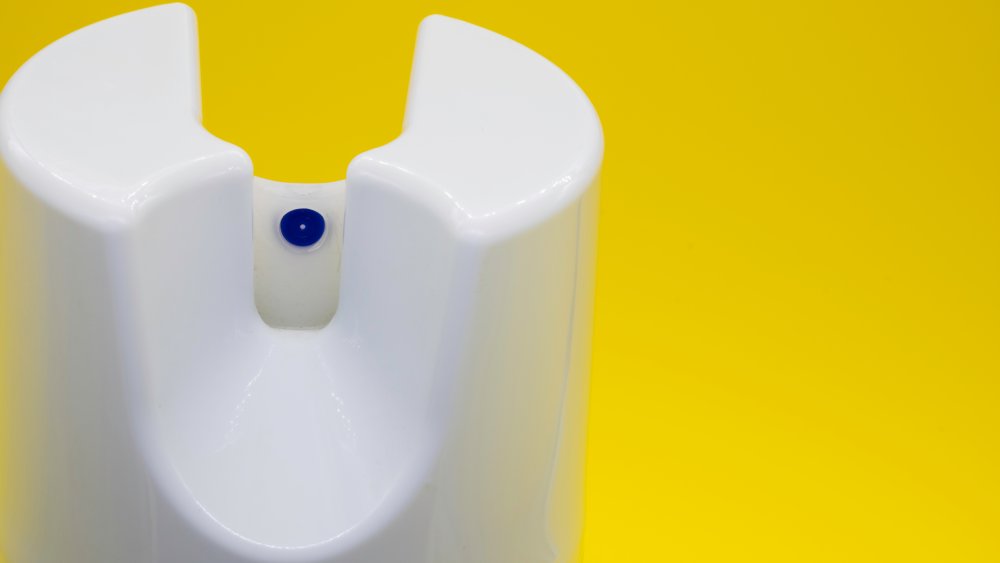The Odd Use For Lysol In The Early 20th Century
Lysol has become a must-have product in 2020 as people spend more time cleaning and sanitizing in hopes of keeping COVID-19 at bay. People have been relying on Lysol for decades, but some of its past uses are bizarre and even downright dangerous.
Per Mother Jones, birth control was often difficult to obtain in the first half of the 20th century. It was expensive, hard to access, and required the intervention of doctors who often didn't want to provide contraceptives to their patients. This left people to devise their own methods of birth control. According to Andrea Tone, author of Devices and Desires: A History of Contraceptives in America, douching was the most common method of contraception between 1940 and 1960, when birth control pills became available.
Lysol had the market cornered as the most popular brand of douche. Until 1953 the product contained a dangerous compound, cresol, which often led to personal injury and even death. Despite this, it was "aggressively marketed" to women as safe and gentle for internal use. Even after cresol was removed from the product's ingredients, Lysol was still used as both a germicide that would disinfect toilets as well as an essential part of women's toilettes, ensuring their "dainty feminine allure."
Ineffective, dangerous birth control
Despite its popularity, douching was an ineffective method of contraception. According to Tone (via Mother Jones), a 1933 study related that almost half of the 507 women who reported douching as their method of birth control ended up pregnant. Furthermore, some attempted to use Lysol as an abortifacient; The Atlantic reported on a 1956 journal article from Obstetrics & Gynecology, "Lysol-Induced Criminal Abortion," in which doctors described four women who were admitted to hospitals poisoned by Lysol after it was introduced into their uteruses to induce then-illegal abortions. One of the patients died as a result.
In addition to its off-label use as birth control, women were encouraged to use Lysol to make themselves clean enough to keep their husband's interests. The cleaning product featured advertisements in which "wives locked out their homes or trapped by cobwebs are surrounded by text asserting a woman should 'question herself' if her husband's interest seemed to have faded." This was just part of what Timeline called "The Sexist, Toxic History of Douching," which led directly into the 1970s and 1980s advertisements that suggested douching and using special deodorants to avoid "that not so fresh feeling." Today, modern health professionals discourage douching; the US Department of Health and Human Services' Office on Women's Health notes that it "can lead to many health problems, including problems getting pregnant," which is perhaps how it became misunderstood as a form of birth control generations ago.

